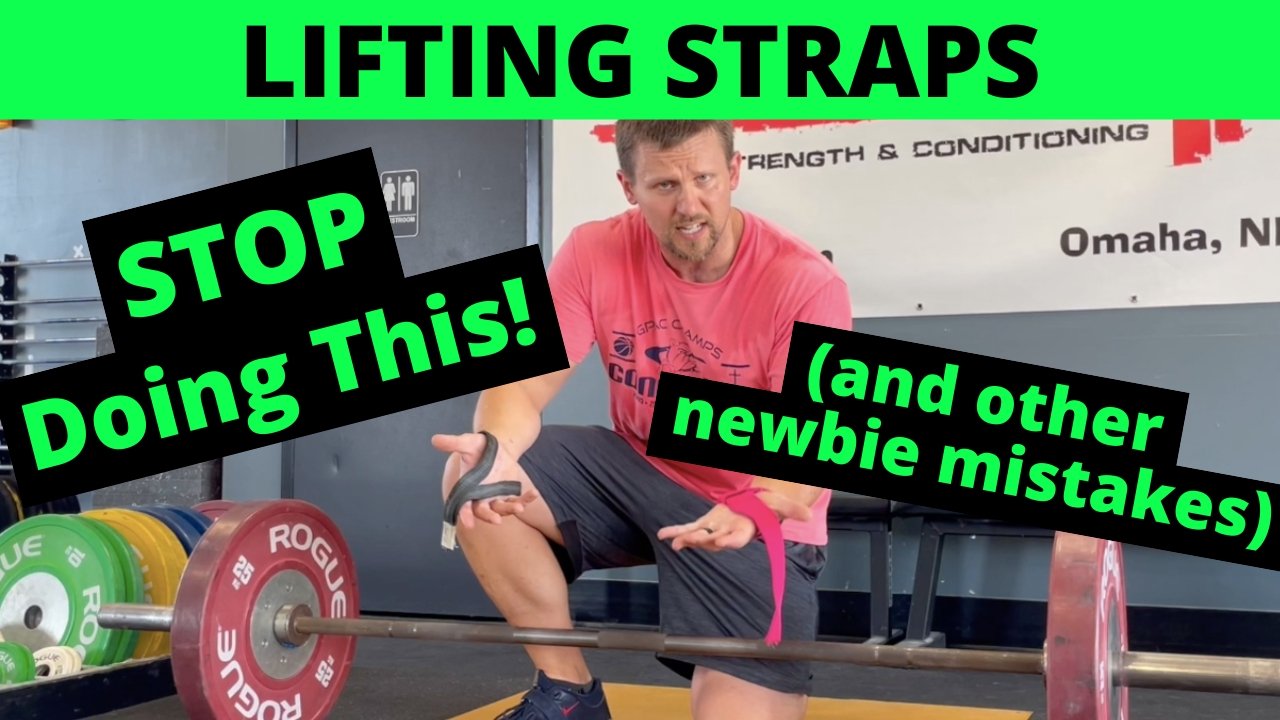Lifting Straps | What You're Doing WRONG (common mistakes)
/If you’re new to using lifting straps (or even if you’re not so new), there are a few common mistakes that you might be making. At best, these mistakes make the use of straps cumbersome, and at worst, these mistakes make straps a liability instead of an asset.
With that said, these mistakes are relatively easy to fix, and once we’ve solved them, you’ll never make them again, so let’s get to it.
As a quick side note, all of these mistakes and their solutions are far more easily seen and understood on video than in print, so be sure to watch the included video.
Figure 1: The correct position for straps (on the hand)
Mistake #1: Wearing straps in the wrong spot
Lifting straps are worn down on the hand (Figure 1) - not up on the wrist or arm. Although lifting straps are sometimes referred to as “wrist straps,” that can be a bit misleading - if you wear them on the wrist, you are wearing them too high. Whether it’s the type of DIY straps that we recommend (the black strap you see in these photos) or the “strap-and-loop” style of straps, be sure to wear them down on the hands.
See the included video for how to easily, cheaply, and quickly make yourself a pair of virtually indestructible lifting straps.
Mistake #2: Wrapping the straps in the wrong direction
When setting up and wrapping the strap around the bar, always wrap toward the thumb, i.e., toward the middle of the bar (Figure 2). Do not wrap the strap so that it heads toward the plates. This brings us to . . .
Figure 2: Correctly wrapping (the black strap) toward the middle of the bar
Mistake #3: Setting up the straps incorrectly
If you are using the “strap-and-loop” style of strap, make sure you have it positioned so that the strap points toward your thumb (Figure 3). If you have it set up so that it points toward your pinky, you won’t be able to wrap the strap in the correct direction (i.e., toward the middle of the bar). The straps for your right and left hands will need to be set up so that they mirror each other.
Figure 3: Positioning the strap so that it points toward the thumb
Mistake #4: Wrapping the strap multiple times
Wrap the strap around the bar once (Figure 4). That’s it - just once. Some straps do not have much excess length (like the black straps in these photos), so wrapping the strap around the bar won’t be a temptation anyway, but for straps that do have a lot of extra material, you still just wrap the strap once. Wrapping it around the bar multiple times is a waste of time and effort, and it doesn’t improve the grip of the strap. One time around.
Figure 4: wrap the strap only once as shown here. the extra material just hangs there.
Mistake #5: Wrapping in front of the bar
This will be obvious if you’ve used straps correctly, but it’s not very obvious for those who are new to straps - when you initially grab the bar, your palm goes in front of the bar, but the strap goes BEHIND the bar (Figure 5).
figure 5: correctly positioning the strap behind the bar when initially taking your grip
If you mess this up and put the strap in front of the bar (i.e., on the same side as your palm), the strap will not help your grip at all, and in fact, it will make the situation worse and make the bar harder to grip. The bar will simply want to roll right out of your hand, so be sure to put the strap behind the bar when you reach down to grab the bar.
As always, we hope these tips help you get stronger and live better.
(Some links may be affiliate links. As an Amazon Associate, Testify earns from qualifying purchases.)








